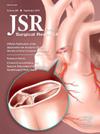A Dedicated Outbound Scheduler Is Associated With Improved Clinic Utilization and Access to Care
IF 1.8
3区 医学
Q2 SURGERY
引用次数: 0
Abstract
Introduction
Differential access to care for patients living in more disadvantaged areas has been well-documented, though the specific factors underlying these disparities have not been well-described. We undertook this study to describe how clinic utilization and patient demographics differed before and after the utilization of a dedicated scheduler making outbound calls for scheduling.
Methods
We identified all new patients seen in a single pediatric urology outreach clinic in March and April 2021 (before the scheduler being hired); July and October 2021; and April, July, and October 2022 (after the scheduler was hired). We recorded the overall clinic utilization for each fiscal year and also demographic data (including Area Deprivation Index) on the new patients seen in clinic. Data before and after the hiring of the dedicated scheduler were compared.
Results
Scheduled clinic utilization increased from 93.6% in FY2021 to 95.2% in FY2022 and to 98.9% in early FY2023. Missed appointments were relatively stable at 7.4% in FY2021, 7.8% in FY2022, and 6.8% in early FY2023. There was a 39.1% increase in the number of new patients seen per clinic shortly after the addition of an outbound clinic-embedded scheduler (8.63 versus 12), which was sustained and slightly increased to 43.8% (8.63 versus 12.4) 1 y later. The proportion of new patients living in the most disadvantaged areas (Area Deprivation Index 8-10) rose 35.3% (from 49.3% to 66.7%; P = 0.04) shortly after the outbound clinic-embedded scheduler was hired and remained 27.7% higher (49.3% versus 62.9%; P = 0.07) 1 y later. The proportion of new patients speaking a language other than English increased from 8.7% before the outbound clinic-embedded scheduler to 13.9% (P = 0.48) shortly after the outbound clinic-embedded scheduler, and 21.0% (P = 0.03) 1 y later.
Conclusions
Addition of a dedicated clinic scheduler making outbound calls was associated with a durable increase in clinic utilization and improved access primarily for patients living in the most disadvantaged areas. Further research is needed to identify what aspects of outbound scheduling are most helpful to the most vulnerable patients.
导言:生活在较贫困地区的患者在获得医疗服务方面存在差异,这一点已得到充分证实,但造成这些差异的具体因素尚未得到很好的描述。我们进行了这项研究,以描述在使用专职调度员进行外呼调度之前和之后,诊所利用率和患者人口统计学特征有何不同。方法我们确定了 2021 年 3 月和 4 月(聘用调度员之前)、2021 年 7 月和 10 月、2022 年 4 月、7 月和 10 月(聘用调度员之后)在一家儿科泌尿外科外展诊所就诊的所有新患者。我们记录了每个财政年度的门诊总体使用情况,以及门诊新就诊患者的人口统计数据(包括地区贫困指数)。结果预约门诊使用率从 2021 财政年度的 93.6% 上升到 2022 财政年度的 95.2%,又上升到 2023 财政年度初的 98.9%。失约率相对稳定,2021 财政年度为 7.4%,2022 财政年度为 7.8%,2023 财政年度初为 6.8%。在增加了外呼诊所嵌入式排班器后不久,每个诊所接诊的新患者人数增加了 39.1%(8.63 对 12),这一比例在 1 年后保持并略微增加到 43.8%(8.63 对 12.4)。居住在最贫困地区(地区贫困指数 8-10)的新患者比例在聘用外呼门诊嵌入式调度员后不久上升了 35.3%(从 49.3% 上升至 66.7%;P = 0.04),1 年后仍高出 27.7%(49.3% 对 62.9%;P = 0.07)。新患者中讲英语以外语言的比例从聘用外呼调度员前的 8.7% 增加到聘用外呼调度员后不久的 13.9%(P = 0.48),1 年后增加到 21.0%(P = 0.03)。还需要进一步研究,以确定外呼排班的哪些方面对最弱势的患者最有帮助。
本文章由计算机程序翻译,如有差异,请以英文原文为准。
求助全文
约1分钟内获得全文
求助全文
来源期刊
CiteScore
3.90
自引率
4.50%
发文量
627
审稿时长
138 days
期刊介绍:
The Journal of Surgical Research: Clinical and Laboratory Investigation publishes original articles concerned with clinical and laboratory investigations relevant to surgical practice and teaching. The journal emphasizes reports of clinical investigations or fundamental research bearing directly on surgical management that will be of general interest to a broad range of surgeons and surgical researchers. The articles presented need not have been the products of surgeons or of surgical laboratories.
The Journal of Surgical Research also features review articles and special articles relating to educational, research, or social issues of interest to the academic surgical community.

 求助内容:
求助内容: 应助结果提醒方式:
应助结果提醒方式:


